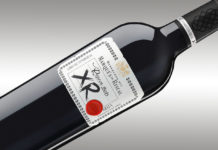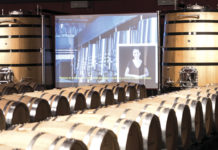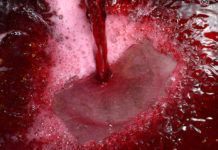During the 38th World Congress of Vine and Wine, the Director General of the OIV, Jean-Marie Aurand, presented an overview of the vitivinicultural sector, as well as initial information from the 2015 thematic report devoted to the rosé wine market, which will be published at the end of the year. The 2015 report concerns the vitivinicultural production potential, surface area under vines, global wine production and consumption, wine export and import volumes, in addition to production of grapes for direct consumption and dried grape production.
The total area under vines (regardless of the final destination of the grapes and including vineyards not yet in production) reached 7573 kha in 2014, which corresponds to a slight growth of 10 kha compared with 2013.
Since the end of the grubbing measures in the European Union (EU), European vineyards have remained stable while plantations in Asia and South America have slightly overcompensated for the reduction in the EU vineyards. In 2014, China became the country with the second biggest vineyard surface area (almost 800 kha).
In 2014, the global grape production (grapes intended for all types of use) was 737 mql, a drop of 40 mql compared with 2013.
There has been an upward trend in grape production over the last 15 years (+13.7%/2000), despite the decline in vineyard surface area. This decline may be explained by a rise in yields due to the continual improvement of viticultural techniques and favourable climate conditions in some countries.
China was the top producer in 2014 with 111 mql (15% of global grape production), followed by the United States (70 mql), and then by France and Italy at the same level with 69 mql.
The production of table grapes (248 mql), usually obtained with higher yields than for the production of grapes intended for winemaking, is less widespread in Europe than in Asia and America. Asia is by far the continent that produces the most «table grapes»: more than half of the world grape production intended for direct consumption (63%) takes place there. Europe is still the leader in terms of «wine grape» production (65%).
Wine production
After a record 2013 production (291 mhl), global wine production in 2014 (excluding juice and musts) reached 270 mhl. This level of world wine production is in line with the average over the past six years. The year 2014 was marked by adverse climate conditions in Eastern Europe, which affected the production in various countries.
Despite a downward trend, Europe remained the top wine producer: France was the leading country (46.2 mhl), ahead of Italy with a recorded harvest of 44.7 mhl and Spain, which returned to its average production level (38.2 mhl) after a record year in 2013.
In addition, production in the southern hemisphere and the United States continued to develop: Argentina recorded 15.2 mhl (+1 %/2013), New Zealand saw a new record with 3.2 mhl (+29 %/2013), South Africa reached 11.3 mhl (+4 %/2013) and the United States had high production levels with 22.3 mhl.
Wine consumption
The data available showed a slight decrease in global consumption in 2014, estimated at around 240 mhl.
The traditional consumer countries resumed their downward trend (or stagnation), to the advantage of new consumption areas. The period between 2000 and 2014 was characterised by a shift in wine consumption: today 40% of wine production is consumed outside of European countries, compared with 31% in 2000.
With 30.7 mhl, the United States confirmed its position as the biggest global consumer country. In keeping with past trends, France (27.9 mhl) and Italy (20.4 mhl) resumed their decline between 2013 and 2014, by 0.9 mhl and 1.4 mhl respectively. The level of consumption in China is estimated at 15.8 mhl: a reduction of 1.2 mhl compared with 2013.
The international wine trade
Global wine exports continued to increase in volume (104 mhl, +3% compared with 2013) while stabilising in terms of value at 26bn EUR.
The wine market is an increasingly globalised sector: 10 years ago, 27% of wine consumed was imported, while today this market share is over 43%.














